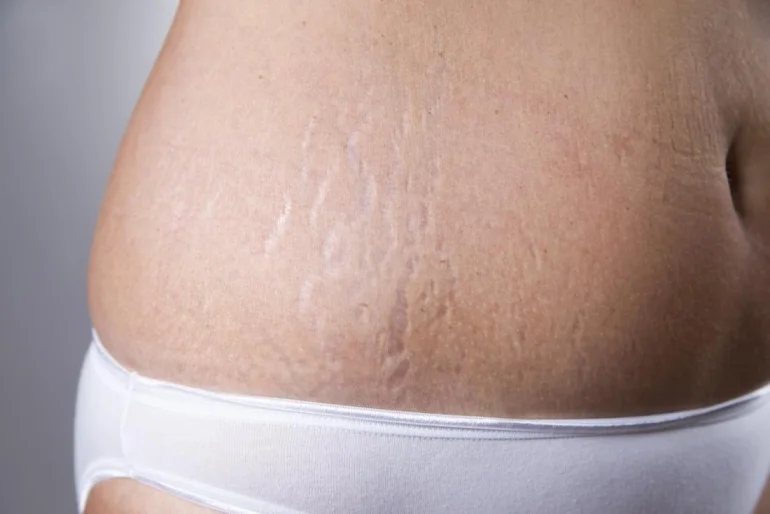Stretch Marks Removal

Stretch marks are long linear lesions/ stripes that occur to due to the decrease of elastic fibers in the second layer that develops on the skin. They are most common in women than men. Stretch marks occur when the skin undergoes growth which can happen due to pregnancy, weight gain and puberty. The most common sites to be affected by stretch marks are the lateral abdomen, thighs, breasts buttocks and upper arm. Stretch marks often fade overtime without treatment.
Stretch marks do not constitute any harm to the physical health, but pose disturbance to the mental health by affecting self-image and sometimes causing anxiety.
SYMPTOMS
- The Skin appears thin, irritated and itchy
- The mark develops as wrinkly, raised streaks that may appear pink, red or reddish-brown, depending on the skin color.
CAUSES AND RISK FACTORS:
- Pregnancy: it is the most common cause of abdominal stretch marks in women. It can show up during or after birth
- Puberty: The rapid growth during puberty could affect the skin and leads to stretch mark.
- Rapid weight gain: increase in weight over a short period of time can cause stretch mark.
- Medical conditions: One major condition that could lead to stretch mark is Marfan syndrome which usually led to decreased elasticity in the skin.
Cushing’s syndrome also causes over production of an hormone that causes rapid weigh gain and skin fragility.
- Use of corticosteroid: the use of corticosteroid for a long time reduces the level of collagen in the skin. Collagen is responsible for the strength of the skin and also supports the skin. The decrease can lead to stretch marks
RISK FACTORS that are associated with stretch mark are the following
- A family history of stretch marks
- Body mass index before pregnancy
- Birth weight of the child in women who are pregnant
- Age due to changes in collagen fiber
- Chronic diseases
TREATMENT
Laser therapy: It works by removing the outer layer of skin to help restructure the overlying skin. During the procedure, beams of light are used in concentrated amounts to encourage new growth. While it can’t get rid of stretch marks completely, laser removal may help make mark smoother, thereby reducing their appearance.
Dermabrasion: A surgical procedure designed to remove skin imperfections, (such as scars), by abrading the surface of the skin with fine sandpaper or wire brushes.
The use of ointments: It can be treated with two different topical regimens (including glycolic acid, L-ascorbic acid, zinc sulfate, and tyrosine and glycolic acid, and tretinoin emollient cream).
